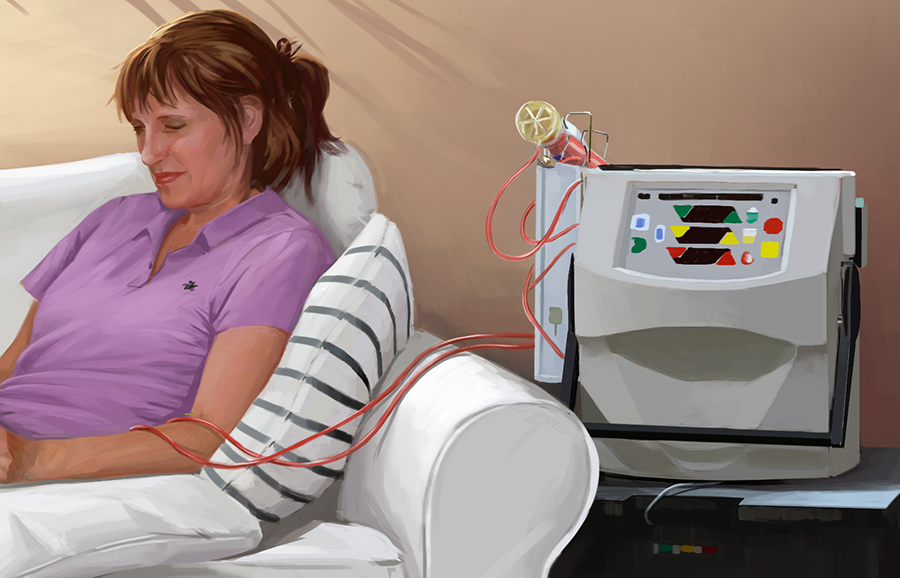
Photo: NxStage HemHD
Most people on dialysis have permanent kidney damage. Dialysis treatment attempts to replace the renal function of filtering blood and can be a lifelong treatment unless a kidney transplant is possible.
Haemodialysis is the most common treatment and means that venous blood is filtered and purified in a special dialysis machine outside the body. This happens by passing the blood through a membrane, a plastic (polymer) filter with nano pores.
“Because dialysis is carried out for up to ten hours a week, the blood can react to the foreign substances present in the plastic membrane and cause a chronic disease. In the worst case, life-threatening changes can occur”, says Hans Elwing, professor of surface biophysics.
Now his research team has discovered a new material that can be used in membranes for dialysis equipment, and which results in fewer side effects.
Discovered how to create less harmful membranes
Typically, dialysis membranes are made of different types of plastics. Now the research group has found that if they combine lipids (fat-like substances) of  different molecular lengths with plastics, the destructive properties of the membrane are eliminated or limited.
different molecular lengths with plastics, the destructive properties of the membrane are eliminated or limited.
The studies also show that the longer the molecular chains of lipids, the less harmful effects they have on blood proteins, but also on other proteins important for the immune system.
“We hope now that these new types of ‘lipid-like’ membranes can be manufactured, allowing us to extend and improve the lives of the millions of patients who are dependent on haemodialysis”, says Hans Elwing.
Similar to the body’s own membrane
These scientific findings are being published in the journal Biointerfaces.
“One of the explanations for our encouraging results may be that lipid-containing plastics resemble the body’s natural cell membrane, which usually does not destroy proteins on contact”, says Hans Elwing.
Mattias Berglin at the RISE Institute, Borås, in collaboration with Hans Elwing at the Department of Chemistry and Molecular Biology, University of Gothenburg, have developed these modified acrylate polymers. Karin Fromell at the Department of Immunology, Genetics and Pathology, Uppsala University, has made some of the crucial surface biological discoveries.
Name of article: Absence of conformational change in complement factor 3 and factor XII adsorbed to acrylate polymers is related to a high degree of polymer backbone flexibility
Link>>
Photo: NxStage HemHD
Contact:
Hans Elwing, Professor emeritus at the Department of Chemistry and Molecular Biology, University of Gothenburg
hans.elwing@cmb.gu.se, +46-(0)31-786 25 62, +46-(0)733-60 46 07

 different molecular lengths with plastics, the destructive properties of the membrane are eliminated or limited.
different molecular lengths with plastics, the destructive properties of the membrane are eliminated or limited.